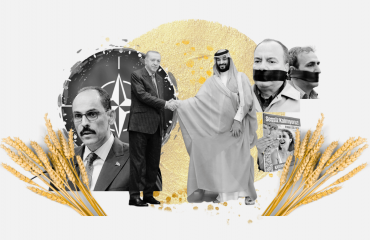

One of my friends from business circles shared an interesting analysis with us yesterday. The KONDA research company complied the data they have collected in the last ten years while doing their public surveys and shared it with their subscribers. It shed a light to the transformation that Turkey has gone through in the last decade and also showed the problems that are persistent. I called KONDA General Manager Bekir Ağırdır to ask, not because of distrust, but because there was so much false information floating around. He confirmed the document, he said that they first send it to their premium subscribers, and they are planning to publicize it next week. I confirmed that, since I had this information, I could have shared some points with YetkinReport readers before next week.
The KONDA data draws a picture of Turkey from 2011 to 2021, as President Tayyip Erdoğan puts “from where to where.”
We’re getting old, we’re getting married without consent
Turkey has been proud of being a young population, but the data showed that the population has aged a little in the last decade. The population over the age of 50 constituted a quarter of the population in 2011, now, it increased to one third.
Less than half of the adult population, 44 percent, work. The largest group of workers is manual labor (blue-collar workers). The rate of workers (and managers) who work with intellectual labor, that is, white-collar workers, is 10 percent.
In the last decade, women’s employment has increased. However, 56 out of every 100 women are still seen as “housewives”. 16 percent work as a worker and tradesmen. The “white collar” rate is only 8 percent.
One of our realities that has not changed in the last ten years is our marriage methods. 54 out of every 100 marriages are either through arranged or non-consensual forced marriage.
Unfortunately, another fact that has not changed in ten years is in the field of education. The KONDA analysis finds that although the general education level has increased, 7 percent of the population still has not received any education.
Lifestyle, origin, faith
45 percent of the society defines themselves as traditional conservative in terms of lifestyle, 31 percent as modern and 24 percent as religious.
But there is another interesting shift in the field of belief. In the last decade, the rate of those who define themselves as non-believers or atheists has increased from 2 percent to 7 percent. It is also possible to evaluate this as a reaction to the AKP government’s efforts to make religious measures dominant in all areas of life in the last decade.
In terms of ethnicity, approximately one fifth of the society defines themselves as Kurdish or Zaza.
How our information source changed in a decade?
We do not read newspapers, 1 out of 4 people said that they read newspapers, but we can argue about the accuracy of the answers given on this subject. If a quarter of the population were actually reading newspapers, newspaper sales would have been around 20 million, whereas distribution records show around one-tenth of that (even according to the inflated figures to receive advertisements from the government).
We get the news from social media. Social media usage has increased from 38 percent to 82 percent in ten years: Instagram 66 percent, Facebook 51 percent, Twitter 23 percent. Although trolls still consider it a luxury, 9 out of 10 adults own a smartphone.
The government’s housing policy has worked, with one-third of the population living in rent. Ten years ago, 37 out of every 100 people had a car, now 56 have. Those with bank accounts also increased in the decade; out of every 4 adults.
3 of them have accounts. This is due to the fact that commercial transactions and salary payments are made through banks. Ten years ago, 38 out of every 100 people had a credit card, while today, 52 have a credit card.
It is useful to evaluate the election surveys in the light of this analysis.


